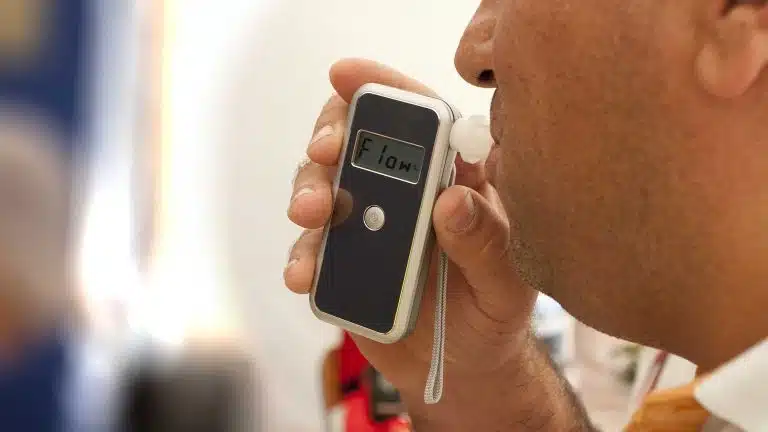Blood Alcohol Concentration (BAC) & Blood Alcohol Levels

Blood alcohol level is a measure of the amount of alcohol in your bloodstream. It is also referred to as blood alcohol concentration or blood alcohol content (BAC). The higher your blood alcohol level, the greater your risk is of experiencing alcohol’s dangerous effects.
Understanding blood alcohol levels can help you determine the potential risks of heavy drinking.
What Are Blood Alcohol Levels?
Blood alcohol levels refer to the percent of alcohol (also known as ethanol or ethyl alcohol) in a person’s blood. It is calculated by measuring how many milligrams of alcohol are in 100 milliliters of blood.
For example, a blood alcohol content (BAC) of .10% means there is 100 milligrams of alcohol in every 100 milliliters of blood.
Standard Drinks & BAC
This metric can be determined by how many standard drinks a person consumes in one hour. Although alcohol affects everyone differently, blood alcohol levels generally peak within one hour.
According to the Centers for Disease Control and Prevention (CDC), one standard drink refers to:
- 12 ounces of beer
- 8 ounces of malt liquor
- 5 ounces of wine
- 1.5 ounces of distilled spirits/liquor (like whiskey or vodka)
The type of alcohol and how fast it is consumed can influence the effects of alcohol intoxication and BAC levels. Binge drinking significantly increases BAC and involves drinking at least 4 (for women) or 5 (for men) drinks in two hours.
Blood Alcohol Test
This metric is most commonly determined through a breathalyzer or a blood test. A breathalyzer is most commonly used by law enforcement when someone is suspected of drunk driving. However, a blood test can more accurately determine BAC.
A blood alcohol test may be used to determine if an individual:
- has been drinking and driving
- is legally drunk in public
- has drank while in an addiction recovery treatment program
- has alcohol poisoning
BAC Legal Limits
ABAC of 0.08% is the legal limit to drive in the United States, with the exception of Utah which has a legal limit of 0.05%.
Several states have also passed a zero-tolerance law that prohibits anyone under the age of 21 from operating a vehicle with any detectable amount of alcohol in their system.
If an individual is found operating a vehicle at the legal limit or higher, they can be charged with driving under the influence (DUI).
Using Blood Alcohol Levels To Determine Alcohol’s Effects
Blood alcohol levels can be used as a guideline to determine the risks of consuming a particular number of drinks. However, some individuals may process alcohol differently and many factors can impact BAC.
The following factors can affect how quickly blood alcohol levels rise:
- body weight
- gender
- health
- how many standard drinks you consume
- type of alcohol
- rate of alcohol consumption
- drinking alcohol on an empty stomach
Due to differences in body composition, women tend to process alcohol slower than men.
In general, a 180 lb man that consumes one standard drink in one hour is likely to have a BAC of 0.02%. A woman who consumes the same amount of alcohol in an hour is likely to have a BAC of 0.03%.
The most common effects of alcohol experienced at different BAC levels include:
BAC 0.02%
- relaxation
- feeling of warmth
- increased mood
BAC 0.05%
- lowered inhibitions
- impaired judgment
- talking louder/faster
- euphoria
BAC 0.08%
- loss of balance
- impaired memory and reasoning
- impulsivity
- slurred speech
- slower reaction time
BAC 0.10%
- worsening reaction time
- lack of self-control
- slowed thinking
- exaggerated emotions
BAC 0.15%
- severe loss of balance
- vomiting
- increased risk of aggression
- increased risk of causing harm to yourself and others
BAC 0.20%
- confusion and disorientation
- nausea and vomiting
- blackout
- decreased perception of pain
BAC 0.25%
- severe impairment
- increased risk of asphyxiation (choking on vomit)
- increased risk of falls or accidents
BAC 0.30% & Up
- cannot walk without assistance
- loss of consciousness
- coma
- death
Alcohol Addiction
Alcohol abuse can lead to increased tolerance to alcohol, which means it takes more alcohol to feel the desired effects. Although it may take a higher number of drinks to feel the effects, this does not affect your blood alcohol content.
However, increased tolerance can make it more difficult to determine BAC and increases the risk of legal and health consequences. Heavy drinking can also lead to alcohol dependence and addiction.
If you or a loved one would like information about alcohol addiction treatment options, please contact us today.
Written by Ark Behavioral Health Editorial Team
©2024 Ark National Holdings, LLC. | All Rights Reserved.
This page does not provide medical advice.
Centers For Disease Control And Prevention (CDC) - Motor Vehicle Safety
Centers For Disease Control And Prevention (CDC) - Alcohol Basics - Frequently Asked Questions
The BMJ - Alcohol In The Body
National Library of Medicine: MedlinePlus - Blood Alcohol Level
Notre Dame College - Blood Alcohol Level
University Of Notre Dame - Absorption Rate Factors

Questions About Treatment?
Ark Behavioral Health offers 100% confidential substance abuse assessment and treatment placement tailored to your individual needs. Achieve long-term recovery.
100% confidential. We respect your privacy.
Prefer Texting?
Our friendly support team is here to chat 24/7. Opt out any time.







 Learn More
Learn More








